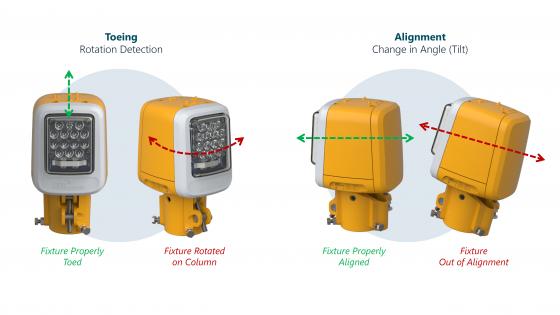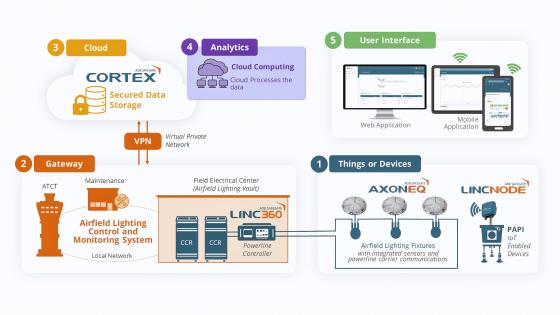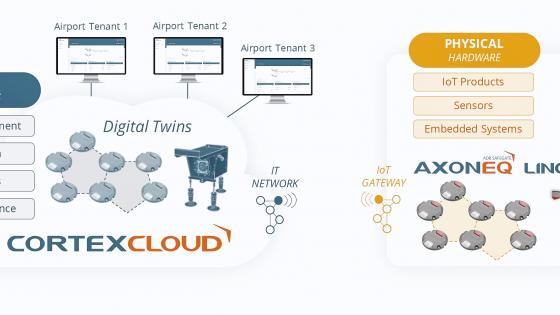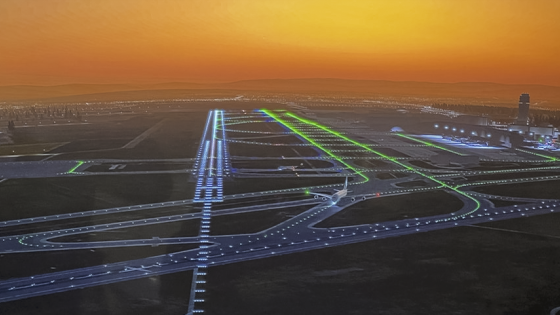Regardt Willer, VP business development and innovation at ADB SAFEGATE, explains how the Airside 4.0 concept will enable airports to tackle today’s problems head on.
The aviation industry is evolving rapidly and airports must adapt to meet the new challenges and demands of the sector. Hubs are under more pressure than ever to reduce costs, increase safety and improve efficiency. The Airside 4.0 concept by ADB SAFEGATE empowers them to achieve these goals by leveraging new and emerging technologies to revolutionise airside operations.
Connectivity for better decisions
Airside 4.0 is a digital transformation technology that enables smarter decision-making and improved situational awareness at airports. It connects devices, assets and systems to a cloud-based platform, enabling sharing of digital data without manual intervention. This connectivity is facilitated by the Internet of Things (IoT) technology, which consists of five main components: IoT devices, the gateway, the cloud, analytics and the user interface.

Regardt Willer, ADB SAFEGATE VP business development and innovation
The process starts with selecting the correct smart device for collecting relevant data that airports need. One such device is ADB SAFEGATE’s AXON EQ intelligent LED airfield ground light with built-in sensors that capture data essential to airport operations. The next step is to right-size device connectivity to the cloud. ADB SAFEGATE’s LINC 360 is the latest generation of powerline communications that goes beyond classic individual light control and monitoring systems to relay real-time two-way data on the airfield series circuit. It also provides a platform for over-the-air updates to the airfield lights and other connected intelligent IoT devices.
LINC Node further expands an airport’s connectivity strategies by allowing airports to IoT-enable legacy airfield ground lighting (AGL) or peripheral airside products from which they wish to extract data. It establishes a wireless gateway like 5G or LTE to stream data to the cloud, allowing real-time remote monitoring.

Toeing and alignment monitoring in the AXON EQ airfield elevated light
Sensors and the airfield
Traditionally, airfield lighting fixtures served only basic functional purposes, enabling airports to switch lights on and off to guide aircraft during landing and taxiing manoeuvres. However, with the addition of integrated sensors into AGL IoT devices, it is possible to collect a tremendous amount of data, not only regarding the operation of the light but also about the airside ecosystem in which it operates.
ADB SAFEGATE has incorporated specific sensors that allow customers to collect critical operational data, including temperature, humidity, pressure, vibration and shock, fixture alignment and proximity detection.
Among the sensors integrated into the AGL IoT devices is a 3-axis magnetic field sensor, which acts like a digital compass, measuring the airfield light fixture's position, orientation and motion. Sensor data can detect when an elevated runway light is not aligned correctly with its mounting column or has moved on the column due to external factors, such as a jet blast. The integration of advanced sensors allows automated work orders to provide immediate warnings and alarms that reduce the need for visual inspections and improve maintenance diagnostics of the runway lights.
These sensors provide vital data for Airside 4.0 analytics, which uses artificial intelligence to predict a variety of scenarios that will empower airports to take actions and make decisions related to safety, sustainability and operational efficiency.
Digital twinning
Airside 4.0 is a crucial step towards improving airport operations in a rapidly changing digital landscape, and the IoT devices represent the building blocks for an airport's Airside 4.0 transformation. However, digitalisation goes beyond connectivity and sensors. It requires the creation of digital twins or virtual replicas of a physical asset. The digital twin is modelled to replicate the behaviour and performance of the physical object in real time, using data gathered from the sensors or other sources of information.
By analysing historical data, airports can perform diagnostic and descriptive analytics
An airport’s digital twin is accessible through ADB SAFEGATE’s CORTEX Cloud, a secure location where all assets and other streaming data is collected and stored. Airports can interact with their customised dashboards on the cloud platform and visualise all their modelled digital twins to track performance. The CORTEX cloud provides advanced sensor fusion algorithms that ingest IoT data to connect the information to the digital twins, creating an intelligent airside with interconnected physical assets.

The five main components of the Internet of Things
Airside data-driven decisions
The power of the CORTEX cloud comes from its specialised data analytics techniques, such as big data processing, machine learning and data visualisation, to process large volumes of complex and diverse data. The CORTEX application can extract meaningful insights, patterns and trends to help airports make data-driven decisions and optimise their airside operations.
By analysing historical data, airports can perform diagnostic and descriptive analytics to uncover areas of their operations that need preventive maintenance or improvements. Real-time or run-time analytics provide improved situational awareness and greater visibility of an airside’s current operating conditions.
Additionally, within CORTEX, this particular asset-related data can be integrated with third-party data sources in order to provide an enriched foundation for decision-making. Potential third-party data may include meteorological, ecological, photometric and runway contamination factors, among others.

The CORTEX cloud provides advanced sensor fusion algorithms that ingest IoT data
Intelligent AiPRON and Airside 4.0
The Airside 4.0 strategy extends to apron management as well. Complex co-ordination among stakeholders, coupled with the financial impact of delays, prompted the development of ADB SAFEGATE’s Intelligent AiPRON solution to manage the aircraft turnaround process.
ADB SAFEGATE’s Safedock X and FleX advanced visual docking guidance systems (A-VDGS) are vital to the Intelligent AiPRON software suite, bringing automation to ensure safe, smooth aircraft docking and on-time pushbacks. The A-VDGS also capture and share valuable information such as real-time gate availability and accurate on-block times.
The strategic deployment of cameras and sensors positioned inside the A-VDGS and across the apron captures real-time visual and environmental data during the turnaround. Once processed using AI algorithms, this allows the system to recognise patterns and provide valuable insights. Computer vision, for instance, can track aircraft movement, monitor ground handling activities and even assess environmental conditions in aid of optimised turnaround operations.

A ‘follow the greens’ simulation to help pilots reduce taxi time
Various stakeholders can utilise the data and insights to streamline their respective operations in unique ways. For example, airports can optimise apron management and allocate resources more effectively. Airlines benefit from accurate predictions of off-block times, enabling them to better plan aircraft schedules, leading to improved passenger satisfaction.
The future is now
The future of the aviation industry is data-driven and technology-enabled, and Airside 4.0 is at the forefront of this evolution. It is empowering airports to move towards a smarter, more sustainable future, paving the way for efficient and safer airports.
